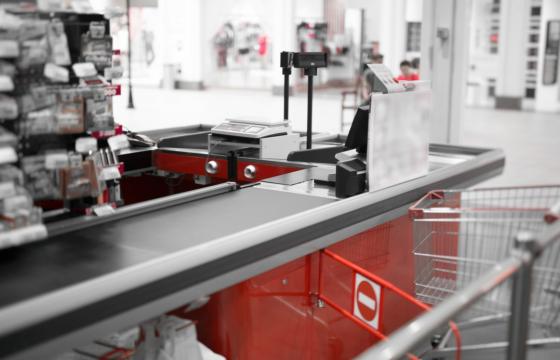
Our Managing Director of Global Retail, Jason Murphy shares his experience helping retailers through the ‘perfect storm’ of COVID-19 recovery, the war in Ukraine, supply chain issues and rising fuel costs.
Over the last couple of years retailers have faced a perfect storm, as a combination of unfavourable circumstances have applied pressures from different directions. Now, with the cost of living spiking and inflation recently reaching a 40 year high, there is real concern around increasing supply chain costs being passed to the customer. So, how can the retail sector mitigate the effects of these circumstances and ensure they can continue to provide good quality produce at the best value to consumers?
The medley of challenges being faced by the retail sector boil down to three core hurdles:
COVID 19: Retailers were able to effectively adapt to the unprecedented changes brought about during the pandemic. However, even as the UK's mandatory distancing and face mask rules in shops have come to an end and a level of normality has returned, retailers continue to face uncertainty during this recovery period. As a newly reopened world, basic assumptions of the retail industry are being redefined, from customer interactions and supply chain logistics to footfall levels and staffing. Retailers are facing increasing pressure to respond to these operational changes quickly and effectively.
Fuel and Energy: The cost of fuel is continuing to climb amid the war in Ukraine and it is creating problems across most industries. However, for retailers with large estates consisting of hundreds of stores and thousands of mission-critical, energy-hungry assets, soaring gas and electricity prices have become an operating challenge. Retailers must strive to drive efficiency across machines, processes and operations in order to reduce consumption and balance the increasing costs.
Supply chain: On top of the effects of record petrol and diesel prices, retailers will also be facing supply chain issues caused by climate protests blocking major fuel depots, with predictions showing that fuel costs will continue to grow. This has now been added to by the growing spectre of industrial action, with recent train strikes impacting products that are moved by rail transportation. We are also now seeing how the war in Ukraine is impacting the availability of grains and oils, highlighting the potentially fragile nature of the global food supply chain.
All of these factors happening in close succession have caused growing concerns for retailers, so just how can they battle through this perfect storm?
Rapid Retail Response
Between 2010 and 2012, during my time as part of the central team for the UK’s largest retailer, energy price rises were predicted in line with what we are seeing now. This led to substantial investment in energy reduction initiatives. However, the increase in energy prices never reached the heights that were expected back then and most organisations scaled back their strategies accordingly. Fast forward to 2022 where retailers are now finding themselves less prepared for the unpredicted rise.
The rapid rise in costs has become the biggest topic of conversation in boardrooms, alongside the considerations for recovery from the pandemic combined with the unavoidable issues in the supply chain. Thankfully, as demonstrated over the last few years in particular, retailers respond well to a crisis and are quick to adapt and we are already seeing supermarkets transition from a focus on ecommerce capabilities to becoming more efficient in stores and distribution.
Technology Partners
The battle is now on to increase the efficiency of stores. Whoever can reduce costs and be more efficient will likely be the ‘winner’ in the eyes of the retailers and the consumers who are therefore less likely to see the rise in price of their weekly shop.
The size and pace of the changes faced by retailers in both the past years and coming months has meant that technology partners are often the answer to alleviating stress and increasing efficiency.
Internet of Things (IoT) solutions provide retailers with unprecedented levels of visibility and management over their high-energy, business-critical machines, such as refrigeration, HVAC and lighting, to ensure they are running as efficiently and effectively as possible. To continue the storm analogy, technology partners take on the role of a meteorologist, monitoring assets closely, tracking performance and behaviour, while predicting where or when the next lightning will hit – in this case, machine inefficiencies or faults. These contextualised findings are then used to increase a retailers efficiency, control and ultimately their preparedness.
From an IMS perspective, IoT not only enables this dynamic monitoring and management of real-time data, but our solution delivers corrective action and drives automation across strategies such as condition-based maintenance, predictive maintenance and identification of root cause; the solution is doing the heavy lifting and taking action without human intervention. Imperatively, this is all achieved without the need for additional hardware – we extract the raw, real-time data from existing infrastructure, regardless of age or manufacturer. Not only does this mean machine performance is optimised, inefficiencies minimised, waste is reduced and energy consumption decreased, it also means retailers can rely on a robust and proven approach to adapt quickly, giving them the flexibility to focus on other business areas.
To Conclude …
Technology partners can’t completely alleviate the challenges retailers are facing, as the impact of COVID, inflation, and increasing supply change issues are difficult to fully mitigate. However, by offering effective asset monitoring and management with sophisticated real-time analysis, action and automation capabilities, choosing the right technology partner will help retailers remain competitive, prevent costs passing down to their customers and effectively weather the approaching storm.